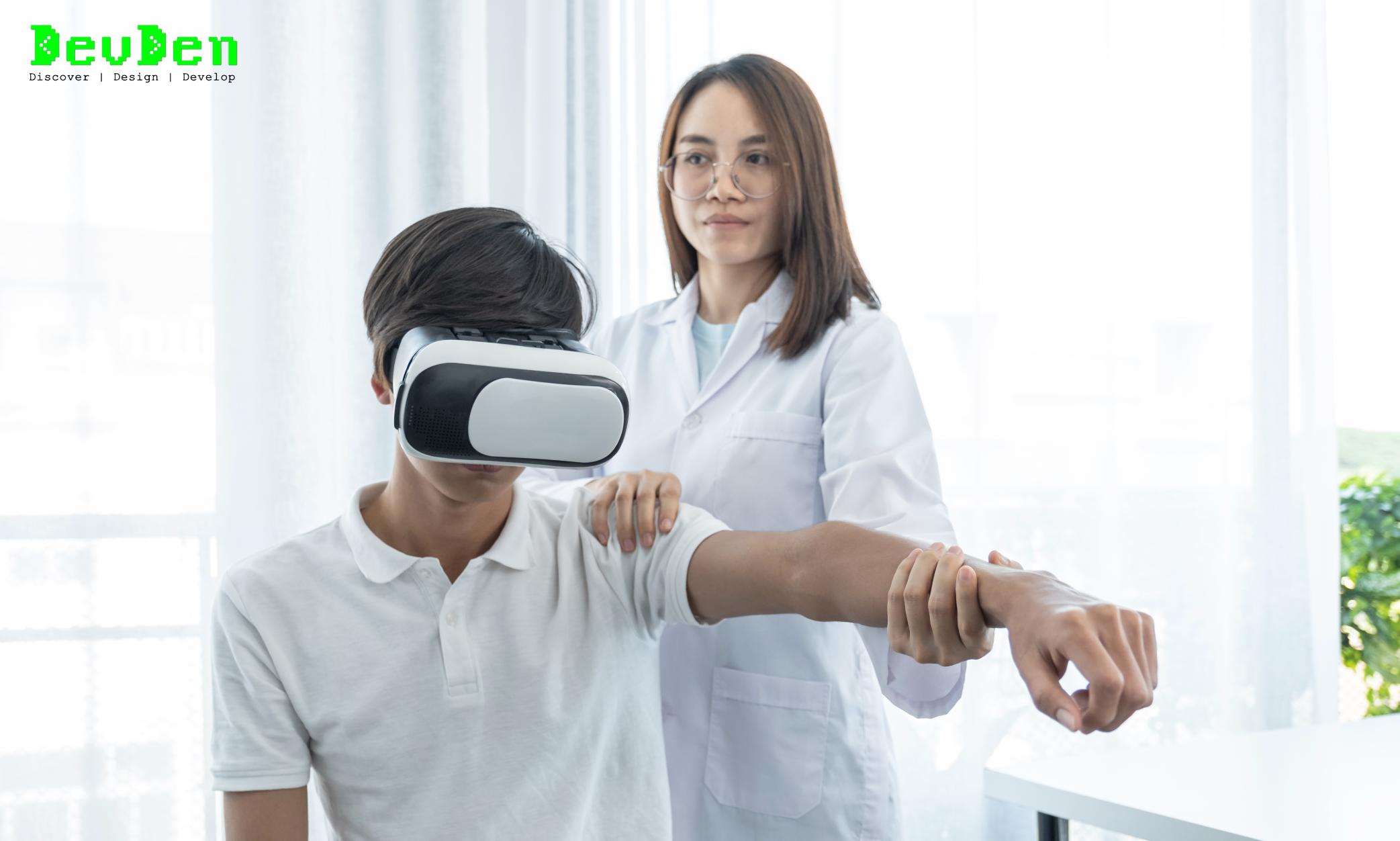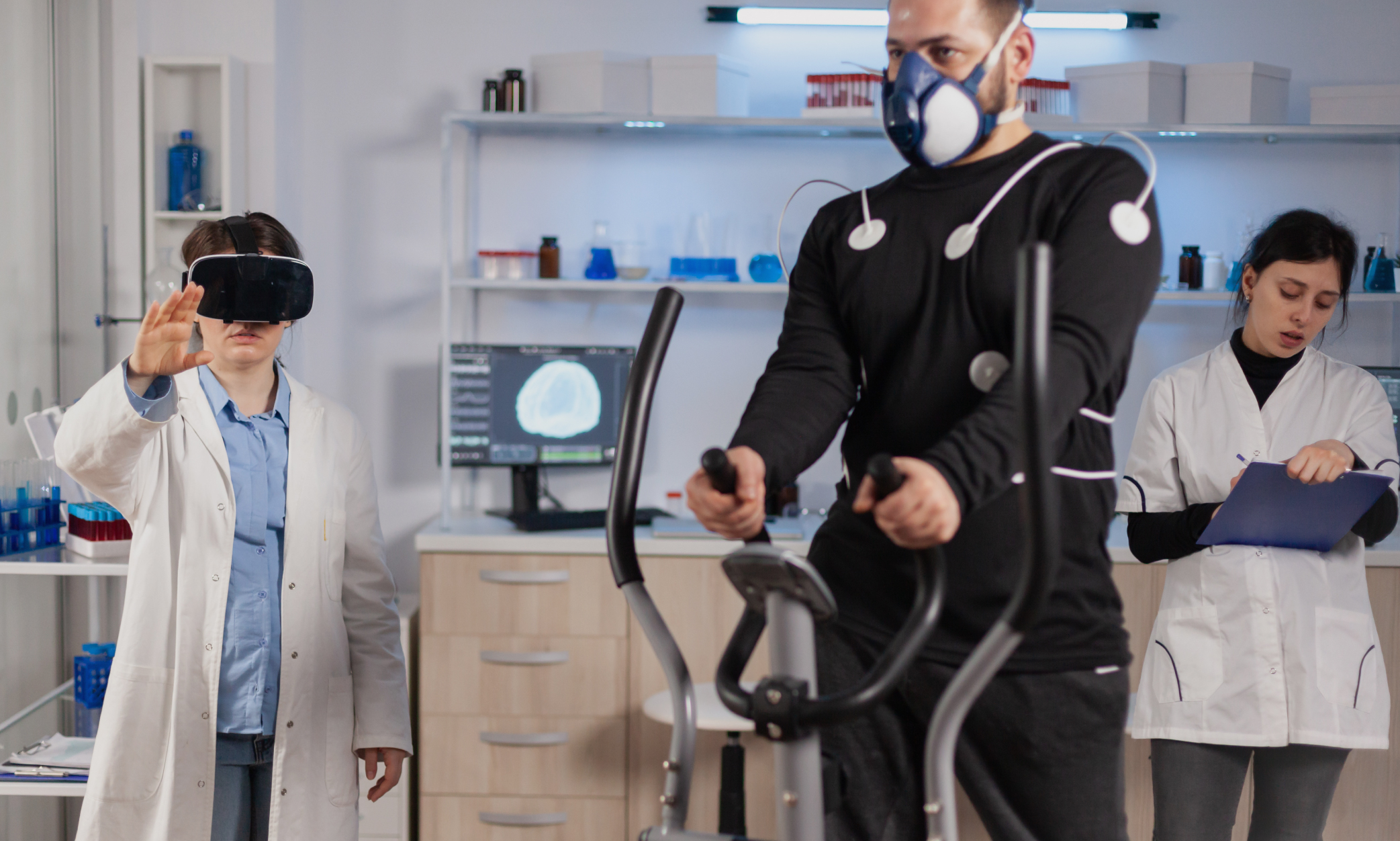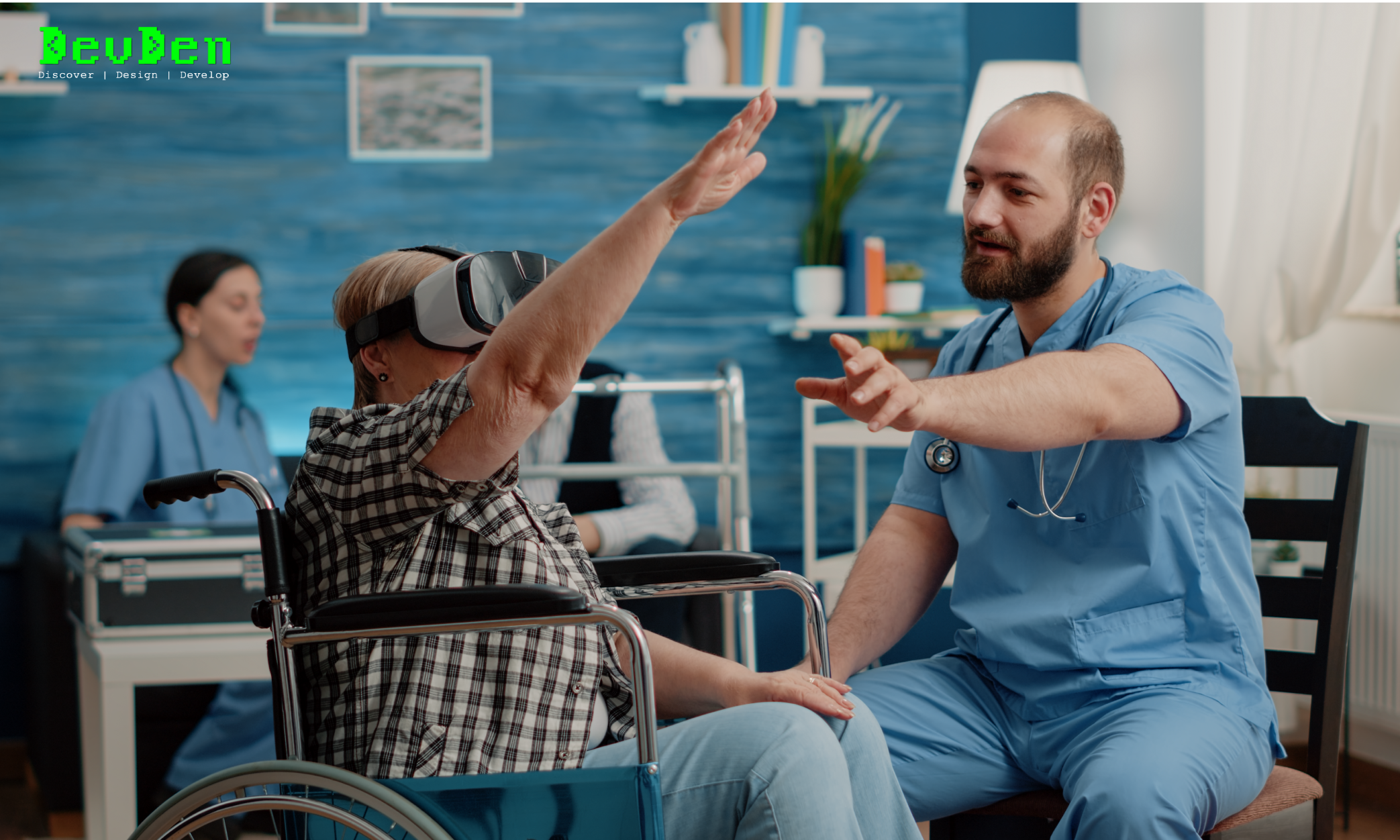With Immersive and interactive technologies such as Virtual Reality (VR) and Augmented Reality (AR) finding new uses in almost every industry, they are becoming increasingly more prevalent in our everyday lives.
And for a good reason. These technologies have a high potential for transforming the real world and how we interact with it.
VR for Physical Rehabilitation:
When we think of VR in the healthcare industry, gaming might be the last thing that comes to anyone’s mind. But many studies have proved that VR shows promising results for patients going through Physical Rehabilitation.
Rehabilitation is a multifaceted long-term process ranging from inpatient or outpatient rehabilitation up to subsequent rehabilitation services. It also involves a multitude of interventions, such as physical therapy, psychological treatment, and activities such as swimming or yoga, which can be quite difficult for elderly patients and patients with spine injuries. This is where VR comes into play.
Some studies suggest that exercise using VR in elderly patients promotes improvements in mobility, muscular strength of the lower limbs, cognition, balance control, and reaction time, and also helps to prevent falls.
How does it work?
The physical therapy session through VR will be monitored by a physiotherapist who has the proper training to administer the games. Patients receive instructions on how to play the game and will watch the physiotherapist play the game before they could start.
The sessions will start off for a short time and the time slot will gradually increase depending on the patient’s convenience and performance.
Through VR, patients can practice activities within safe, enriched, and challenging environments, which can improve motor learning and neural plasticity.
In addition, it can serve as a feasible strategy for intervention and an alternative complement to conventional exercises. And many patients might not like the idea of exercising inside a hospital or rehabilitation center. But with VR, they can pick out any place they like and train there, which can improve their mood while also staying in a safe and controlled environment.
Other uses of VR Gaming in Healthcare:
According to the Human Interface Technology Lab at the University of Washington, VR applications have an anesthetic effect and “numb” these areas of the brain, making them less active and helping patients cope with damage better.
VR is also being used as a supplemental method of teaching social and communication skills to individuals with Autism Spectrum Disorder.

IrisVision is a VR glass that is becoming increasingly popular among patients with poor vision since it enables them to resume their day-to-day activities.
Key Takeaway:
While it is not widespread yet, VR Health games are proving to be promising tools for engaging patients in highly immersive experiences designed to address diverse health contexts. And with the latest advancements in immersive technologies, we can see more of its applications in the coming years.





